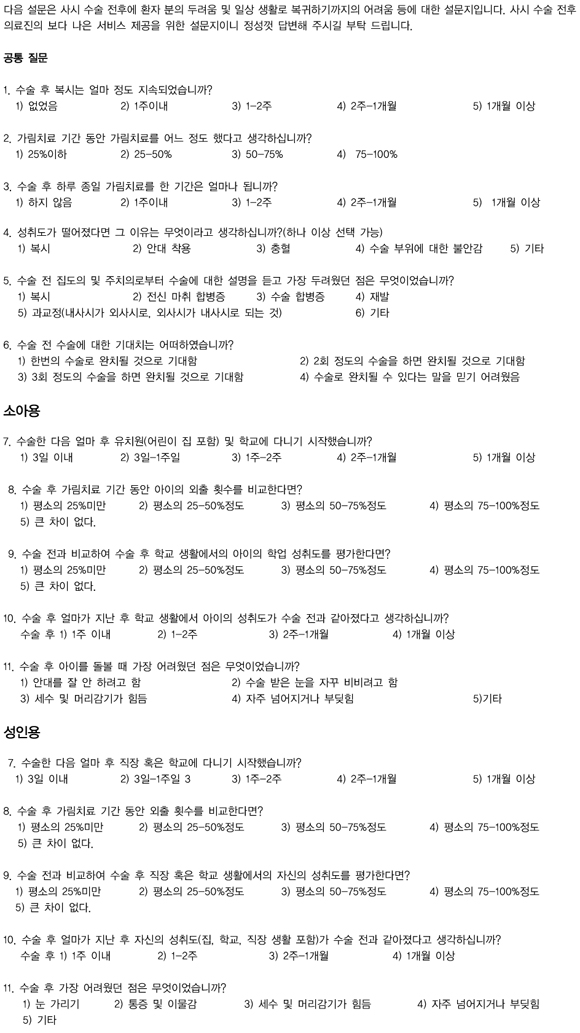Abstract
Purpose
To investigate preoperative concerns and expectations of caretakers and patients who underwent strabismus surgery and the patients course of return to daily life.
Methods
Eighty-five strabismus surgery patients were enrolled in this study. We performed a questionnaire survey including 11 questions about the concerns, expectations of strabismus surgery and the course of return to daily life after surgery. In total, 25 adult patients and 60 children with their caretakers were asked to fill out the questionnaire.
Results
The results showed that 77% of all patients and their caretakers expected that the strabismus would be cured after a single operation. The greatest concern before surgery was the possibility of strabismus recurrence (60%). Fifty five percent of the patients reported the use of an eye patch for 2 weeks to 1 month after surgery and 88% of them showed a 75-100% increase in performance after the operation. The most common reason for decreased performance was the use of an eye patch (61%). Most patients returned to normal daily activities within 1 to 2 weeks after surgery.
Figures and Tables
References
1. Olitsky SE, Sudesh S, Graziano A, et al. The negative psychosocial impact of strabismus in adults. J AAPOS. 1999. 3:209–211.
2. Cho YA, Lee DS, Kim EJ. Long-standing adult horizontal strabismus with early childhood onset. J Korean Ophthalmol Soc. 1993. 34:782–787.
3. Paysse EA, Steele EA, McCreery KM, et al. Age of the emergence of negative attitudes toward strabismus. J AAPOS. 2001. 5:361–366.
4. Burke JP, Leach CM, Davis H. Psychosocial implications of strabismus surgery in adults. J Pediatr Ophthalmol Strabismus. 1997. 34:159–164.
5. Satterfield D, Keltner JL, Morrison TL. Psychosocial aspects of strabismus study. Arch Ophthalmol. 1993. 111:1100–1105.
6. Beauchamp GR, Black BC, Coats DK, et al. The management of strabismus in adults--III. The effects of disability. J AAPOS. 2005. 9:455–459.
7. Nelson BA, Gunton KB, Lasker JN, et al. The psychosocial aspects of strabismus in teenagers and adults and the impact of surgical correction. J AAPOS. 2008. 12:72–76.
8. Coats DK, Paysse EA, Towler AJ, Dipboye RL. Impact of large angle horizontal strabismus on ability to obtain employment. Ophthalmology. 2000. 107:402–405.
9. Goff MJ, Suhr AW, Ward JA, et al. Effect of adult strabismus on ratings of official U.S. Army photographs. J AAPOS. 2006. 10:400–403.
10. Merrill K, Satterfield D, O'Hara M. Strabismus surgery on the elderly and the effects on disability. J AAPOS. 2010. 14:196–198.




 PDF
PDF ePub
ePub Citation
Citation Print
Print









 XML Download
XML Download